Find out what the propagation and garden teams have been up to this week.
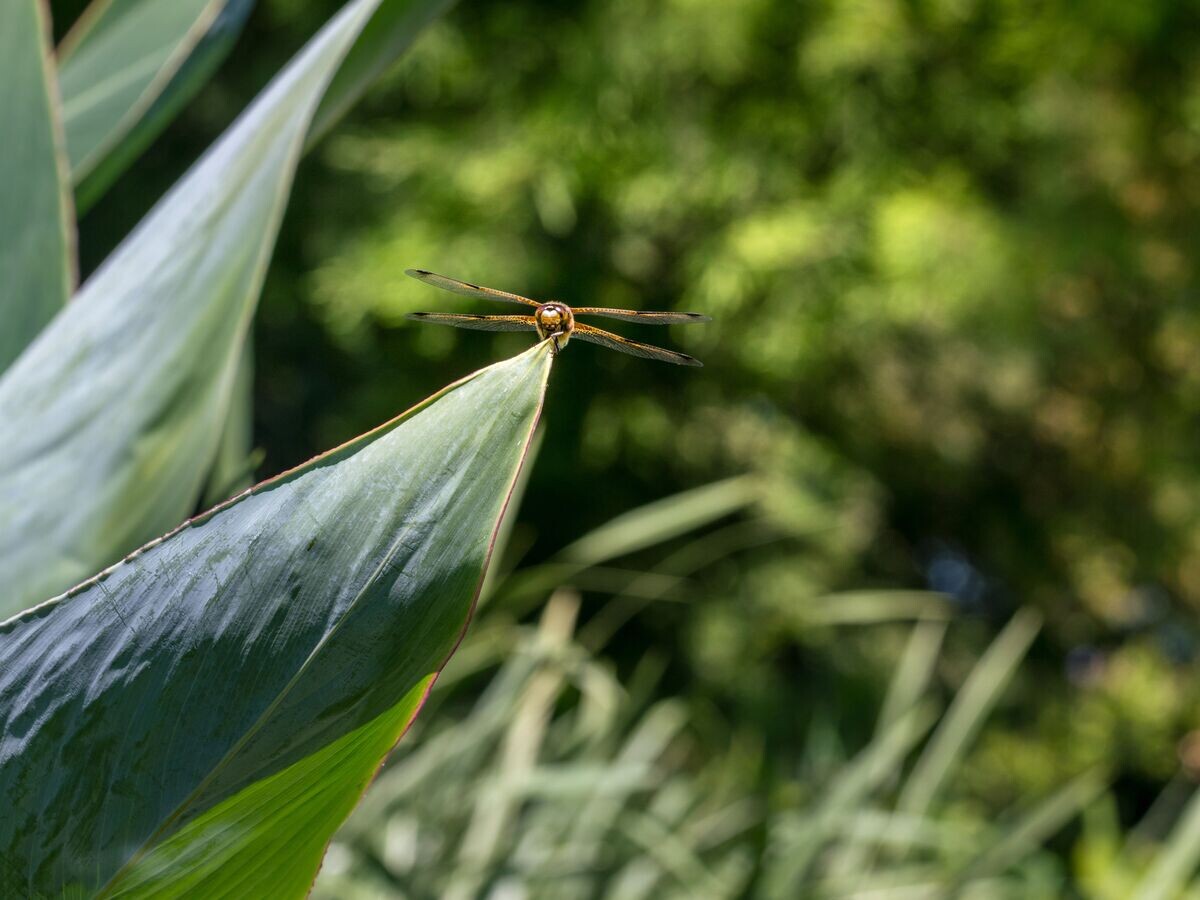
Wild Words from the Ground - July

Welcome to our series of blogs featuring the photos and sightings of wildlife in the garden (and outreach sites like Chattowood and the Beth Chatto Meanwhile Garden) by our staff, whether in the office, shop, tea-room, nursery or garden. The images are curated and commented upon by Dr Chris Gibson, our Wildlife Advocate. This one has been produced a little early, so anything from the last few days of the month will be included in the next report.
While the photos are not always of the highest quality – our staff are always busy doing their main jobs! – they give a real feel of life in the garden, something we are very keen to encourage, as indeed was Beth.
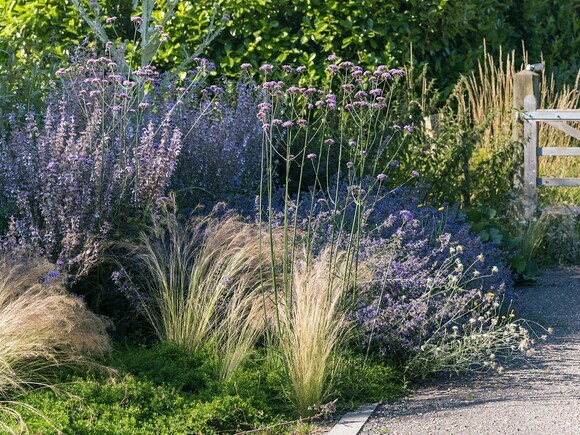
The first three weeks of July continued the themes of the summer of drought and lots of hot sunshine. Then on the 20th, that all came to a spectacular end with storms delivering 60mm of torrential rain in just a few hours (the parched grass is already greening up!)
But the most significant wildlife event of the month was the ladybird and hoverfly blizzard, at its most spectacular from 8th to 10th, presumably an influx from across the North Sea. Seven-spot Ladybirds, six species of hoverfly and Large White butterflies filled the skies and descended on the gardens, as they did in many other places, at least from Great Yarmouth to the Thames.
Especially on the eryngium in the Reservoir Garden, the sheer numbers of hoverflies in particular attracted a lot of comment, both from visitors and those working, like Asa who took this picture (which doesn’t do justice to the hum of the throngs).
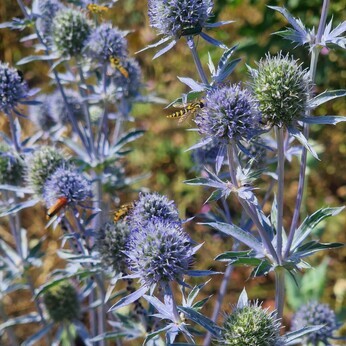
And Sybille who commented on the huge numbers of ladybirds, asking whether they were the invasive Asian (Harlequin) Ladybird. In fact Harlequins were very hard to find, certainly only in the normal numbers (or perhaps lower than) we have come to expect in recent years. Seemingly all that were involved in the influx were Seven-spots.
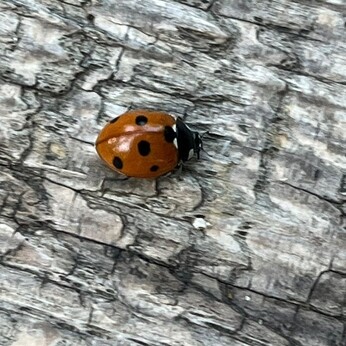
Steve also captured another aspect of the abundance with Large White butterflies massing around the betony.
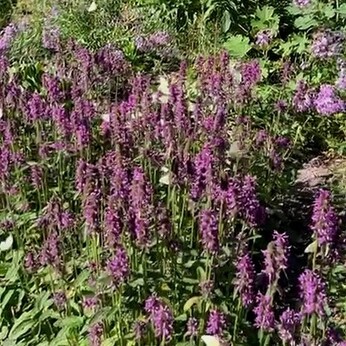
The star plants were of course also attracting insects other than the migrants: Cathy got this great shot of a Lasioglossum furrow-bee (sadly unidentifiable to species level from photos) on eryngium while Malin captured an equally lovely image of two Brown Argus butterflies on the marjoram.
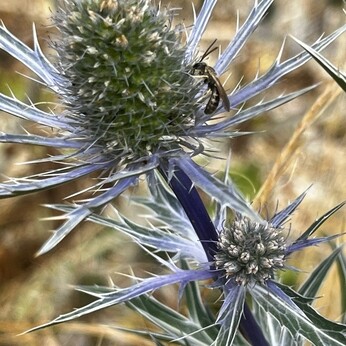
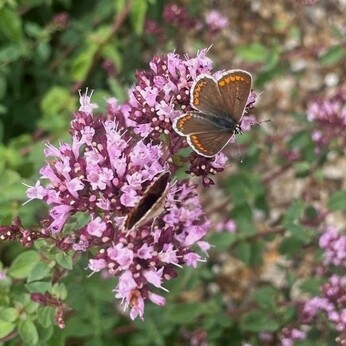
Cathy also found a dead example of one of the garden predators, our largest dragonfly, the Emperor, one that had no doubt died and then dried out, essentially mummified, by the heat. Most of its colour has been lost, but the long, narrow, pale brown pterostigma [the coloured patch on the front edge of its wings] and the shape of the black marks on the first abdominal segment indicates its identity, even in the absence of colours on the abdomen. Over the course of the month, Emperor Dragonfly numbers started to fall, but were replaced by a very good showing of Brown Hawkers, with distinctive tawny brown wing membranes.
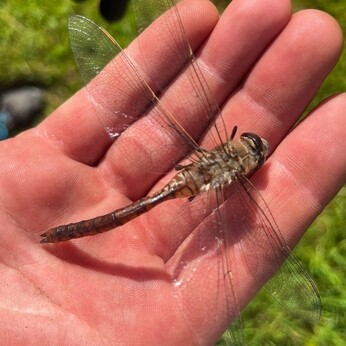
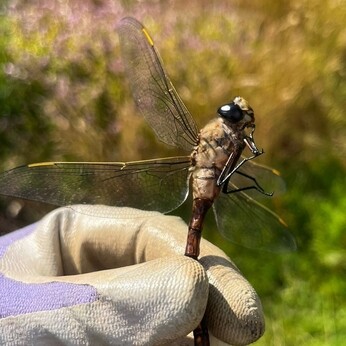
Two other predators helping keep balance in the garden were this Garden Spider, a cracking shot from Sean, showing the cross mark on its back that identifies it, and Scott’s Sand Wasp, a heathland species that I believe has never been found in the gardens before, although I did once find it at Chattowood. The great news is that it appeared to be visiting a nest hole in the ground, although it was not seen provisioning the nest with paralyzed insect larvae. Something to look out for!
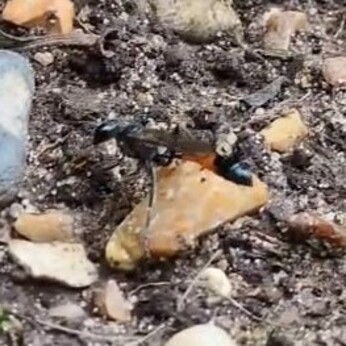
One of the records of the month came from Matt, a picture of Saltmarsh Horsefly Atylotus latistristus. In Britain, this found along north Norfolk coast, the Solent and near the Essex/Kent coastline. We have found a couple in Wivenhoe over the years, but this is the first record from the garden. It is male: the eyes are big and touch at the forehead, whereas females’ eyes don’t touch. And only the female bites, needing a blood meal to ripen her eggs, whereas the male (based on this sighting) seems to prefer Iced Latté!. It is listed on the Essex Red Data List and found in only a few coastal areas of the county (see the map published online by the Essex Field Club https://www.essexfieldclub.org.uk/portal.php/p/Species+Account/s/Atylotus+latistriatus): indeed this record may be the furthest it has ever been recorded from tidal waters.
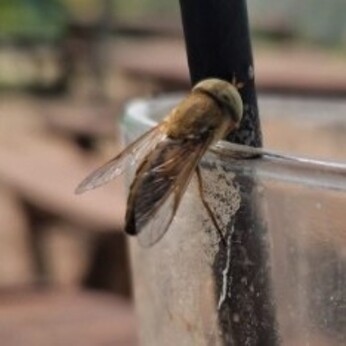
We sadly had to cancel the July moth trapping event due to a seriously adverse weather forecast, but photos of caterpillars have continued to come in, here an Elephant Hawkmoth, voracious nibbler of Fuchsia, Willowherb and Bogbean, from Rob and Sean’s Gypsy Moth, probably a first record for the gardens. Unlike many hairy caterpillars this doesn’t seem to cause a serious skin rash if you handle it, but they often live communally and can cause extensive defoliation of trees or shrubs.
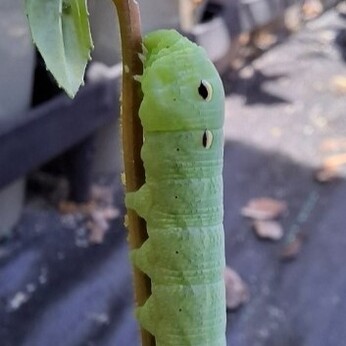
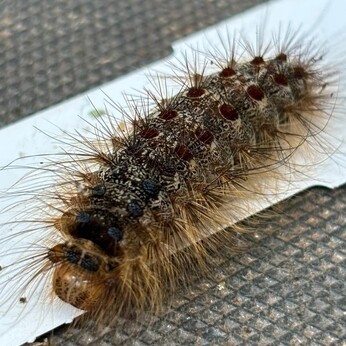
And finally, leaving the invertebrates for a moment, Emily and Kirsten found and rescued a Long-eared Bat. Although one of the more common species in this country, we have had few confirmed records of this around the garden, most likely because there are few folks around the site when the bats are flying. A bat survey is one thing we would like to organise.
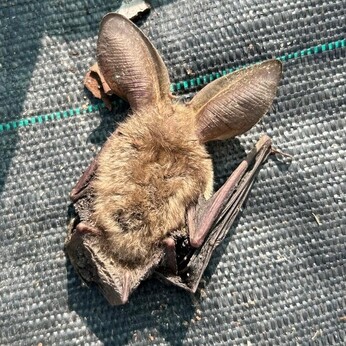
As I wrote last month, the Buzz is Back. But we must not let complacency set in, and stop doing all we can to save the future planet just because (unusually) there are lots of insects around. Nothing has changed fundamentally compared to last year when I was complaining of the Silent Summer. The same pesticides are used profligately. Habitat loss and fragmentation is increasing in the drive to build more houses to satisfy a ‘crisis’ promoted by housebuilder lobbyists. And climate collapse is accelerating, especially with world ‘leaders’ in thrall to big oil.
There are always oscillations around a declining trend. Last year was a trough, this looks like a peak. It may well be due to weather patterns of the last few months. And almost certainly many of the insects we have been seeing in coastal Essex are not home-bred. Thank goodness for immigration, as in so many aspects of life.
It is years like this one that give me hope though. As a conservationist over the past four decades, I have seen the continuing, worrying decline of wildlife, but I cling to hope that if nature is given the chance it can and will bounce back. It has to.
For a different perspective on the last month, see my personal blog of the July Wildside Walks:
The Wild Side of Beth Chatto Gardens: after the Ladybird Blizzard… | Chris Gibson Wildlife
As for the month ahead, now that we have had rain, and the medium-term forecast looks more unsettled, we should be in for a bumper few months as nature winds down from the summer. And we will be out there to document it all!


COMMENTS